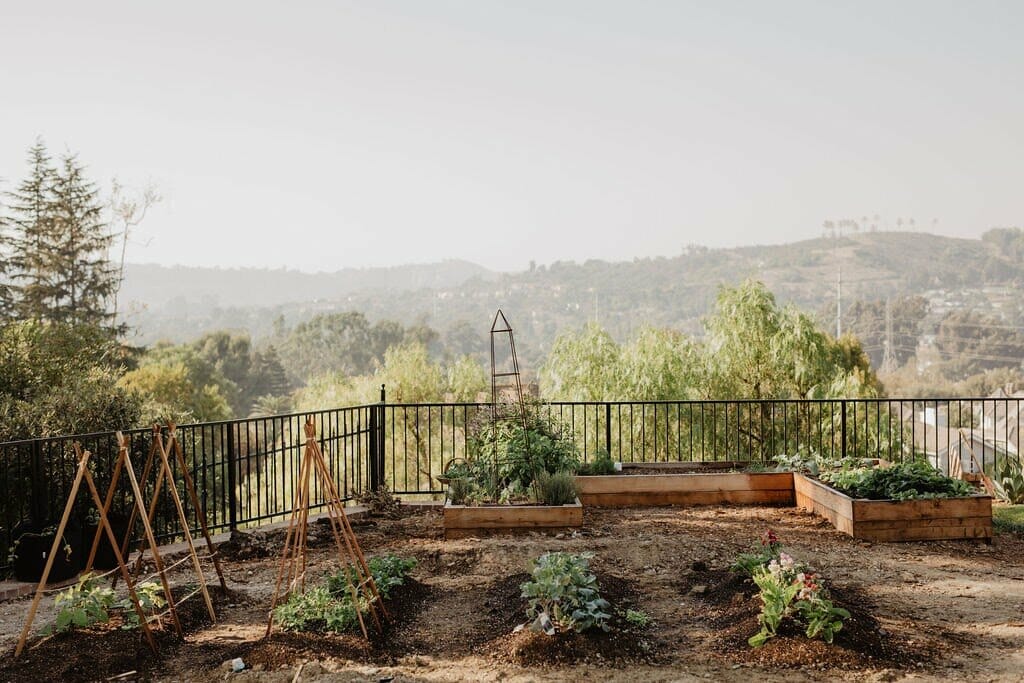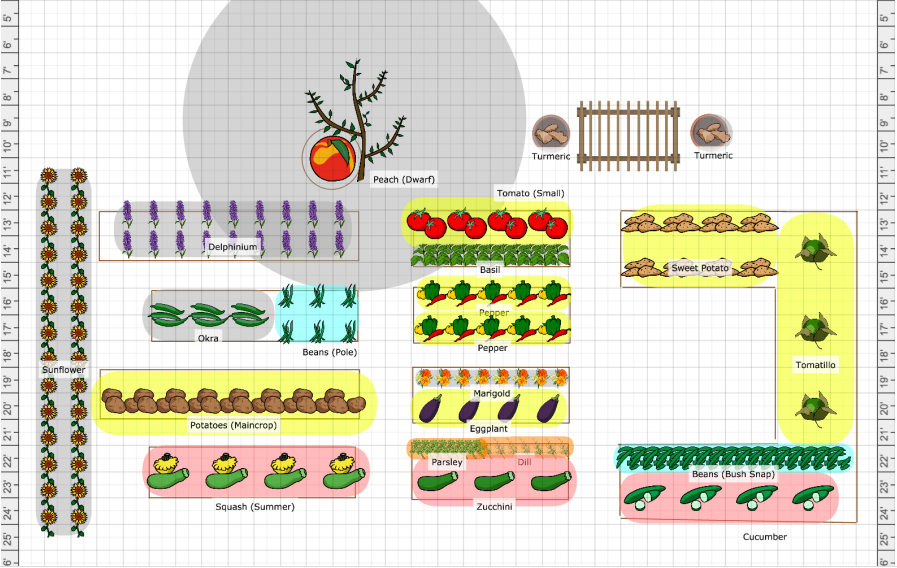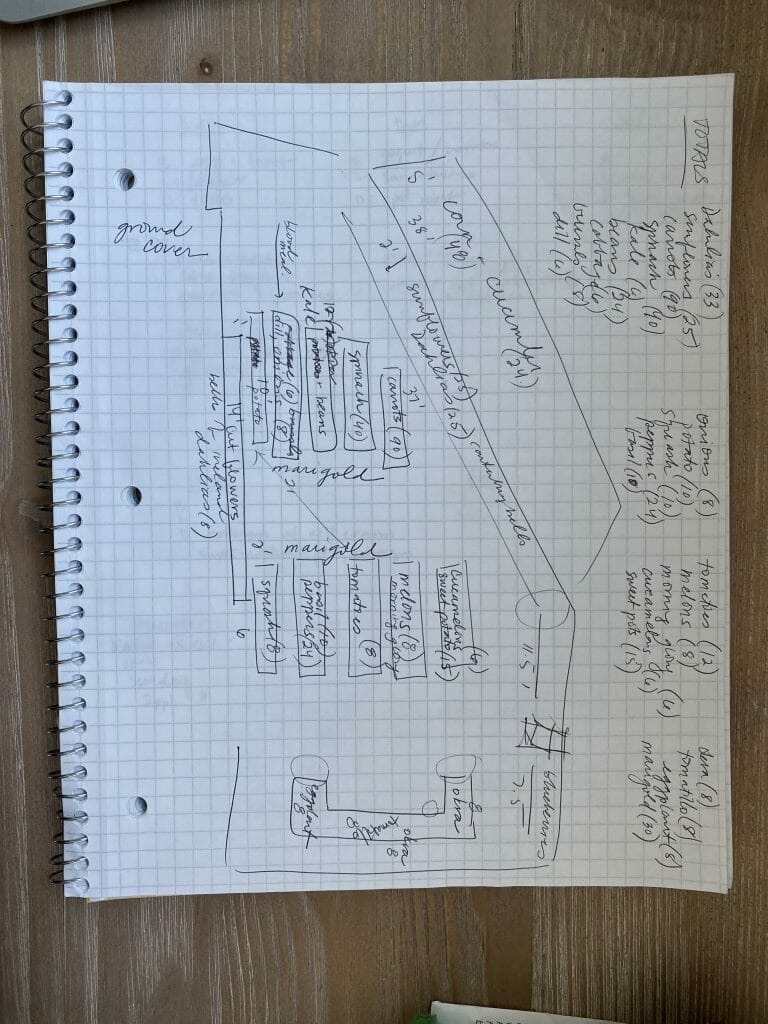
My Spring Garden Planning

I’ve mapped out my garden seven ways to Sunday, and really it just takes time to refine and rethink sometimes. Spring garden planning is all about planting once frost has passed, potentially starting seeds indoors, and properly placing all your veggies.
I start my garden planning with graph paper and my beds outlined. I do a mixture of planting in a raised bed and in-ground in berms (my temporary solution that you can read about here). I will also be doing a lot of cut flowers this year, so that prep is a bit different as well.

Planning your Veggie Garden
Planning the veggie portion of the garden is always a bit like Tetris for me. Fitting all the pieces together just right, so that we have a seamless and ever-producing harvest. Once you know what you want to grow, here is what I take into consideration next:
- Quantities. Knowing how many veggies to grow to feed your family is a big undertaking. Luckily there are a lot of resources online to help you guess if you don’t know. I actually have a post about what I’m doing to track our veggie intake this year. Once you know how much you want to plant, it will help you find space in the garden.
- Size. This is the second most important thing to know. I place the biggest things and the vining things first. Those plants need supports and cast shade, so their placement is key. For me, that includes tomatoes, melons, beans, and corn. I’ll have some trellises for the tomatoes and beans, and the corn just needs to back up against something because it gets so big.
- Companions. Once you have some key plant placements mapped out, you can fill in the gaps with companion plants. Some of my favorite companions are marigolds with tomatoes and basil, squash and beans with corn, and chives with strawberries.
This year I’ll be planting corn and cucumbers together, so those got mapped out very first. Then I add in companions for those plants. For example, I love to put basil and marigolds with tomatoes, so those went into my map next.
After that, I place veggies that need a little more time, like potatoes, and then their companions, and so on and so forth. I typically tuck herbs into beds as pest control (I’ll be doing chives with my cabbage this year) and as space fillers since they are a little less picky about who they share a bed with.
All of this prep helps make the actual date of planting sooo much easier, as well as helps you to consider how many seeds to start of each plant.
I hope this helps you do your own Spring Garden Planning, and if you have any questions, please leave them in the comments!

xo,
Bailey
